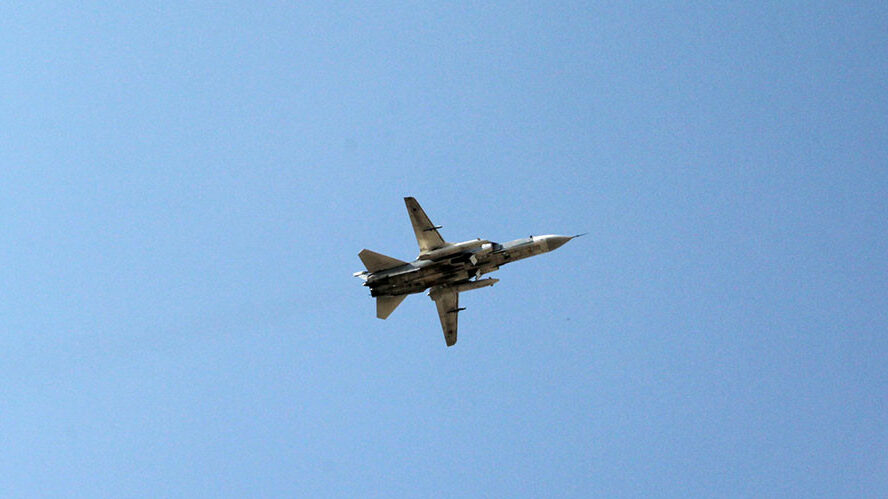
A Russian Su-24 strike aircraft in the sky over the Khmeimim airbase in Syria. Photo: Dmitriy Vinogradov / RIA Novosti
Syrian and Russian Su-24 fighter bombers have carried out a series of airstrikes against sabotage groups in Syria’s central desert, also known as al-Badya.
It is unclear when exactly the Syrian and Russian airstrikes took place. However, video footage of the airstrikes surfaced online on July 16. The targeted sabotage groups were reportedly trained by the United States-led coalition at al-Taf garrison in the southeastern Syrian area of al-Tanf and made several attempts to launch attacks in the past.
Around 200 U.S. troops are usually deployed at al-Tanf. The coalition maintains a 55-kilometer no-fly zone around al-Tanf. Despite this, Russian fighter jets conduct armed patrols over the garrison on a regular basis, likely to monitor suspicious activities there.
Earlier this week, it was also reported that a Russian intelligence aircraft flew directly over the garrison without being intercepted.
The U.S. claims that it is present in al-Tanf to counter ISIS. However, the real purpose of the garrison is to block a strategic highway that links Damascus with the Iraqi capital, Baghdada. In addition, the garrison is reportedly being used as an outpost to collect intelligence and facilitate Israeli attacks against Syria.
Several Russian airstrikes hit al-Tanf and nearby areas recently, according to unverified reports. Videos of the reported airstrikes surfaced online on July 7 and 10.
In May, Sergey Naryshkin, director of Russia’s Foreign Intelligence Service, accused the U.S. of training ISIS terrorists in al-Tanf on sabotage. Later in June, Alexander Lavrentiev, the Russian president’s special envoy for Syria, said that the coalition was strengthening its military contingent in the garrison and other parts of Syria.
The recent movements by Syria and its allies around al-Tanf are leading to worries in Washington. On July 14, a Pentagon official told reporters that the Russian military group in Syria had been quietly coordinating with Iran’s Islamic Revolutionary Guard Corps on long-term plans to pressure the U.S. to withdraw its forces from the garrison and other parts of Syria.
The U.S. presence in Syria is not authorized by Damascus, who consider it to be an occupation. Washington appears to be planning to keep its forces in the country for the long term, despite the risks of a military confrontation.
MORE ON THIS TOPIC:

